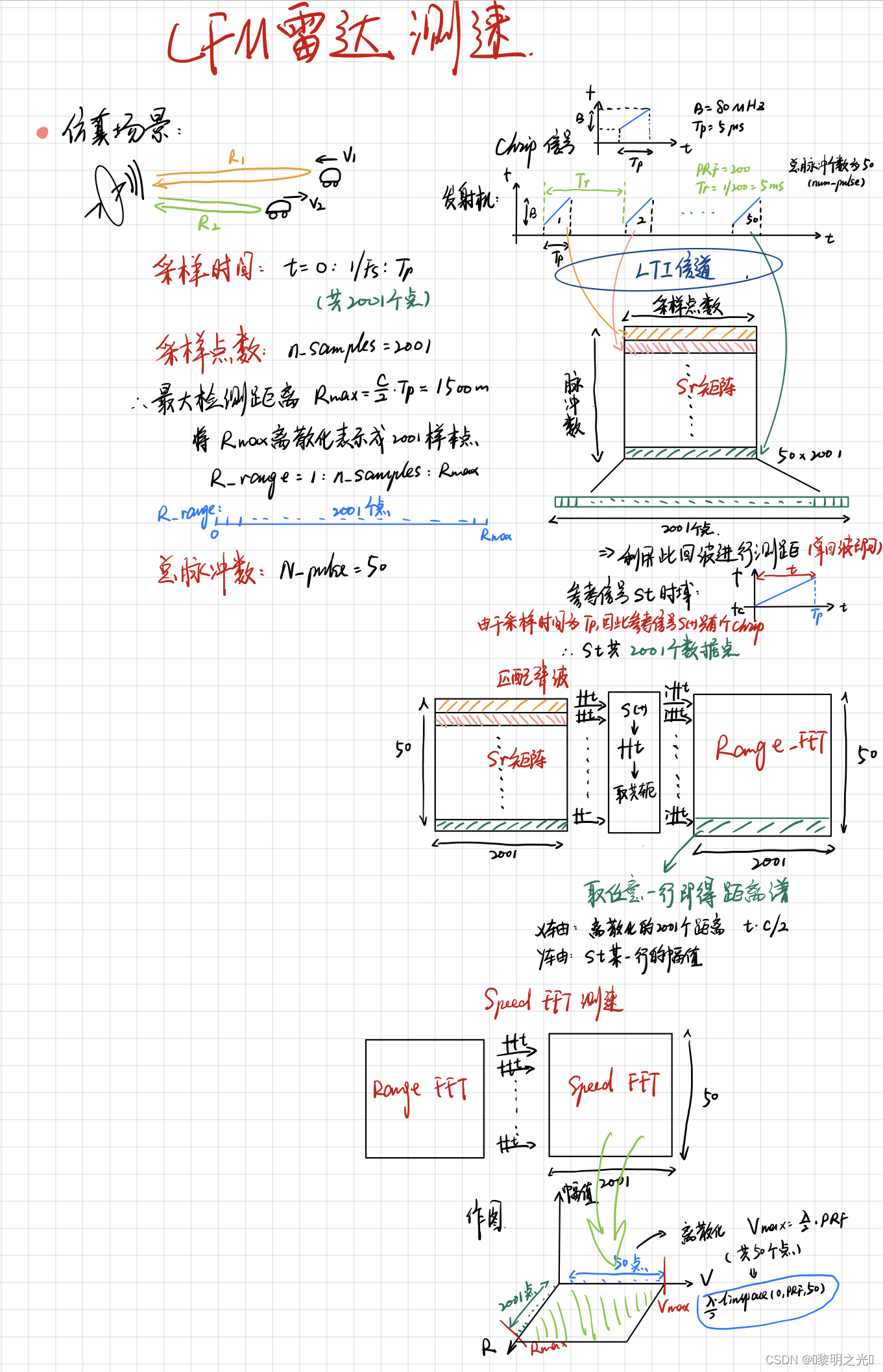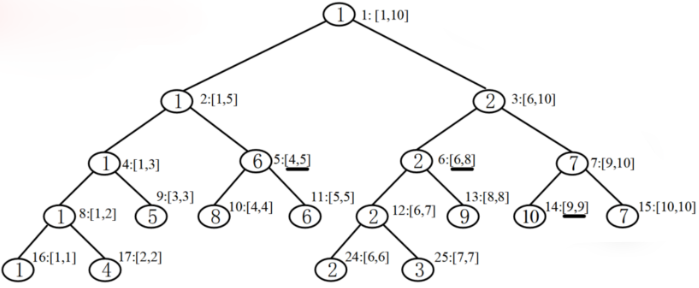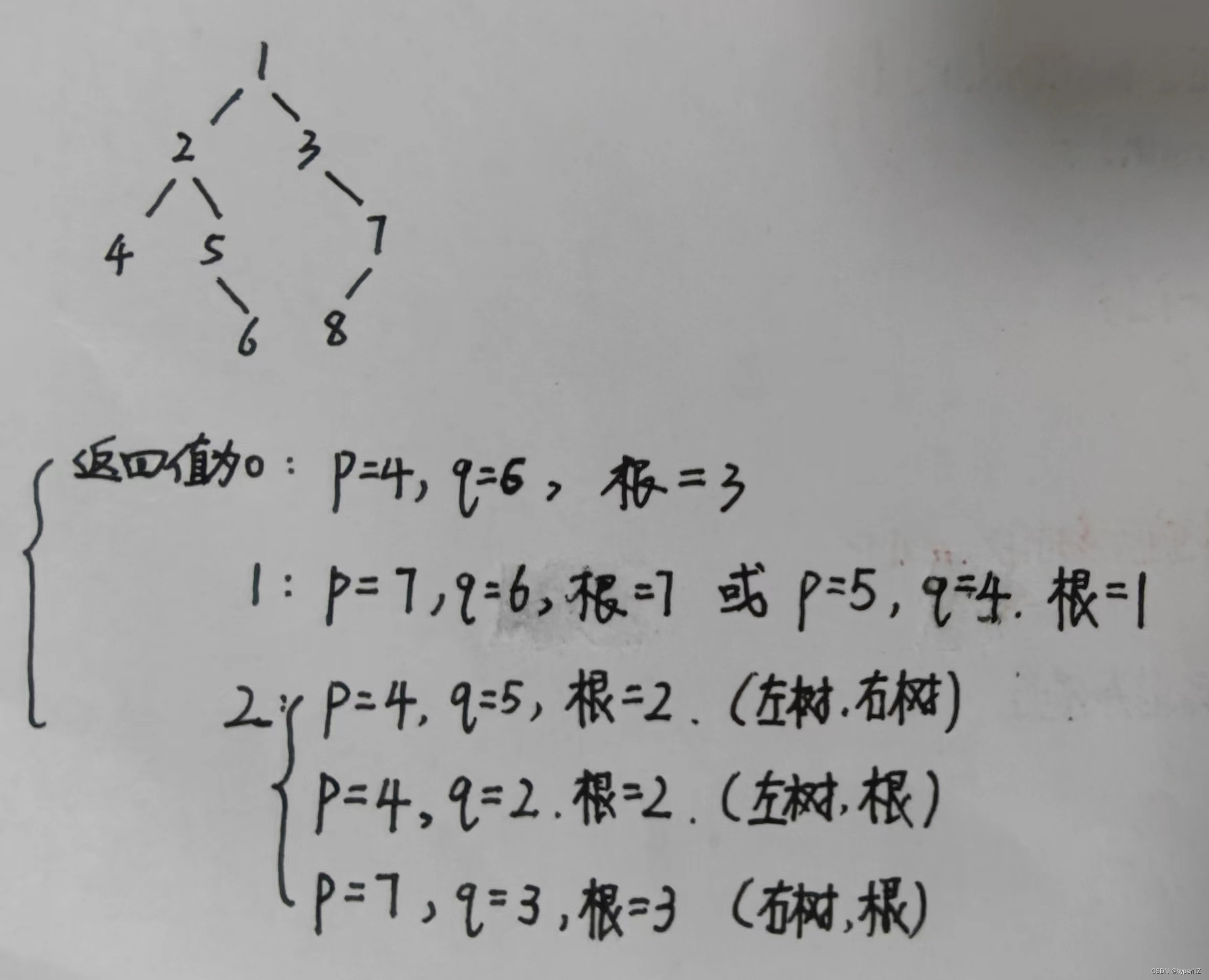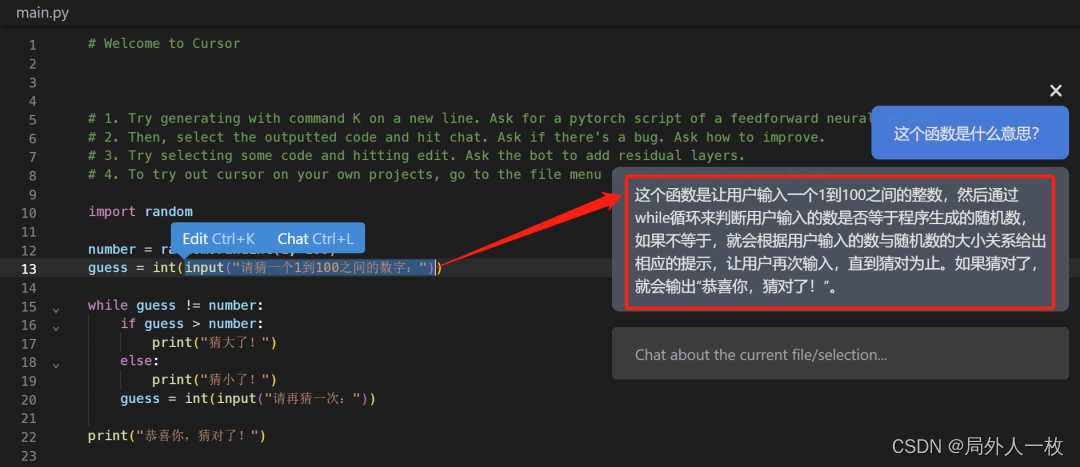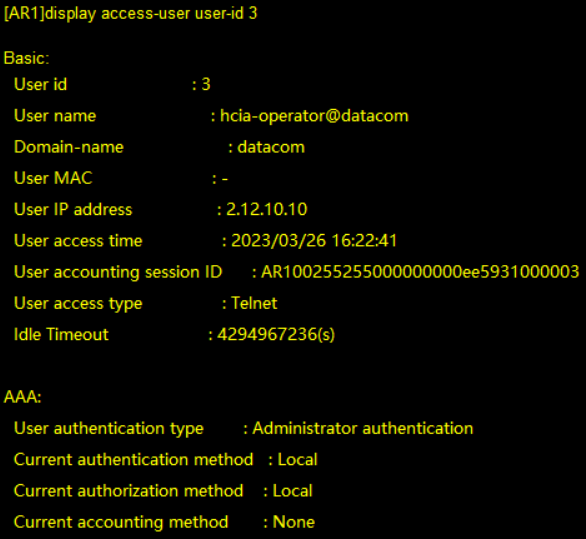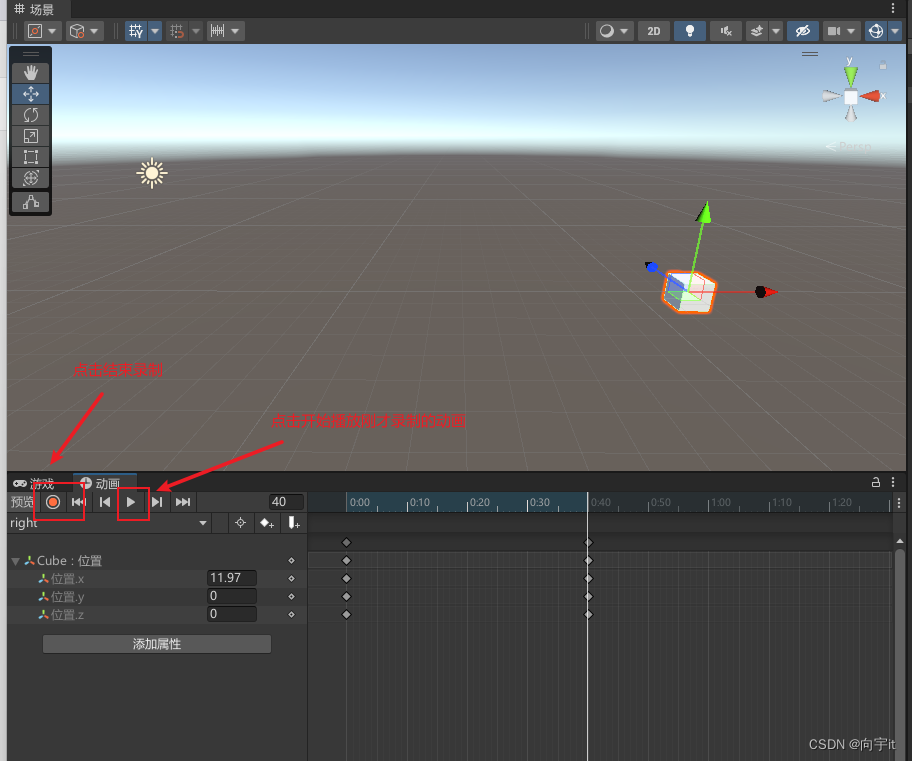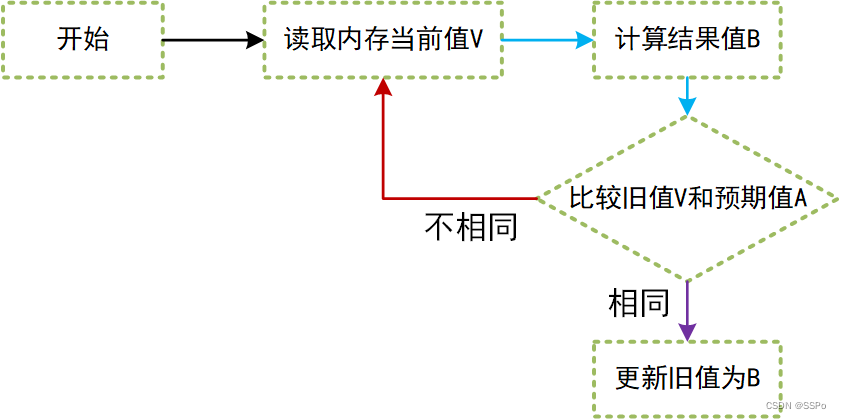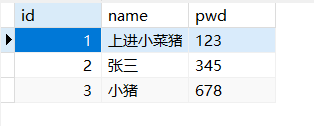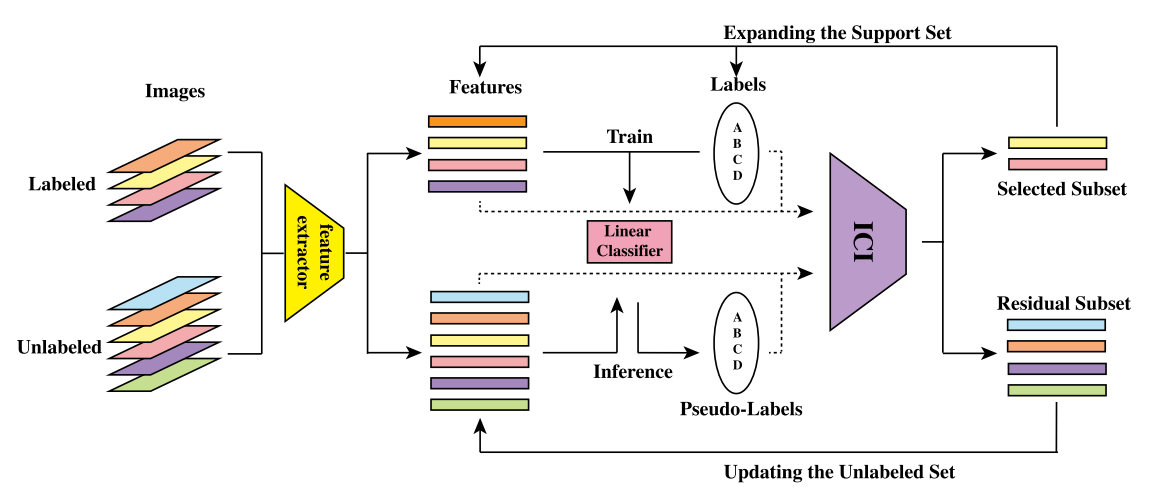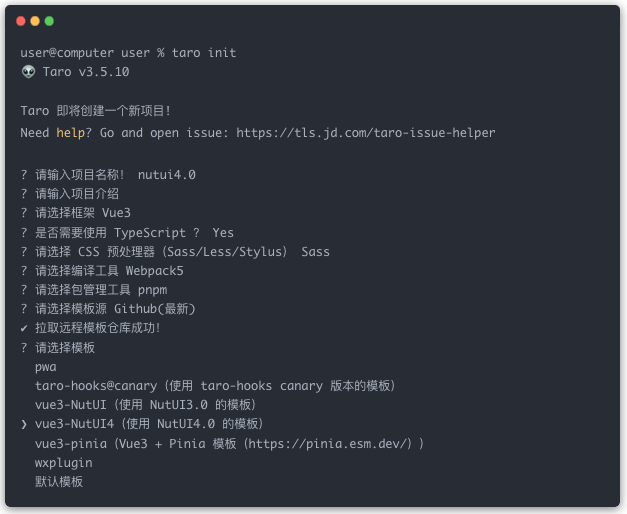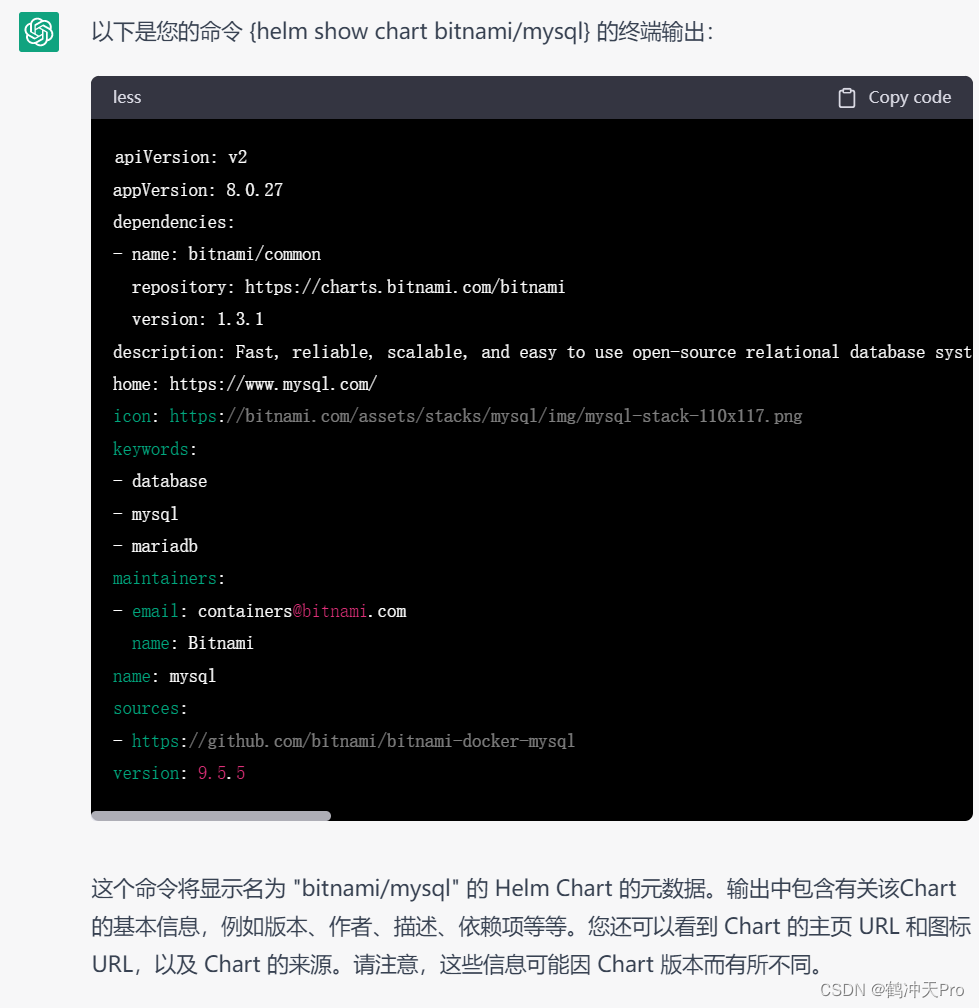目录
一、概述
1.1 常用遍历算法
1.1.1 算法简介
1.1.2 for_each遍历算法
1.1.3 transform遍历算法
1.2 常用查找算法
1.2.1 算法简介
1.2.2 find 查找算法
1.2.3 find_if 查找算法
1.2.4 adjacent_find 查找算法
1.2.5 binary_search 查找算法
1.2.6 count 查找算法
1.2.7 count_if 查找算法
1.3 常用排序算法
1.3.1 算法简介
1.3.2 sort排序算法
1.3.3 random_shuffle排序算法
1.3.4 merge排序算法
1.3.5 reverse排序算法
1.4 常用的拷贝和替换算法
1.4.1 算法简介
1.4.2 copy算法
1.4.3 replace算法
1.4.4 replace_if算法
1.4.5 swap算法
1.5 常用的算术生成算法
1.5.1 算法简介
1.5.2 accumulate生成算法
1.5.3 fill生成算法
1.6 常用集合算法
1.6.1 算法简介
1.6.2 set_intersection算法
1.6.3 set_union集合算法
1.6.4 set_difference集合算法
一、概述
① 算法主要是由头文件 #include<functional> //内建函数对象头文件, #include<numeric>,
#include<algorithm>组成。
② <algorithm>是所有STL头文件中最大的一个,范围涉及到比较、交换、查找、遍历操作、复制、修改等等。
③ <numeric>体积很小,只包含几个在序列上面进行简单数学运算的模板函数。
④<functional> 定义了一些模板类,用以声明函数对象。
1.1 常用遍历算法
1.1.1 算法简介
① for_each //遍历容器
② transform //搬运容器到另一个容器中
1.1.2 for_each遍历算法
① for_each在实际开发中是最常用遍历算法,需要熟练掌握。
② 函数原型:for_each(iterator beg, iterator end, _func);
#include<iostream>
using namespace std;
#include<vector>
#include<algorithm>
//普通函数
void print01(int val)
{
cout << val << " ";
}
//仿函数
class print02
{
public:
void operator()(int val)
{
cout << val << " ";
}
};
void test01()
{
vector<int>v;
for (int i = 0; i < 10; i++)
{
v.push_back(i);
}
for_each(v.begin(), v.end(), print01()); //利用普通函数实现遍历操作,放入函数名即可
cout << endl;
for_each(v.begin(), v.end(), print02()); //仿函数,放入匿名函数对象即可
cout << endl;
}
int main()
{
test01();
system("pause");
return 0;
}
运行结果:
0 1 2 3 4 5 6 7 8 9
0 1 2 3 4 5 6 7 8 9
请按任意键继续. . .1.1.3 transform遍历算法
① 功能描述:搬运容器到另一个容器中。
② 函数原型:transform(iterator beg1, iterator end1, iterator beg2, _func);
- beg1 源容器开始迭代器
- end1 源容器结束迭代器
- beg2 目标容器开始迭代器
- _func 函数或者函数对象
③ 搬运的目标容器必须要提前开辟空间,否则无法正常搬运。
#include<iostream>
using namespace std;
#include<vector>
#include<algorithm>
//常用遍历算法 transform
class Transform
{
public:
int operator()(int v)
{
return v;
}
};
class MyPrint
{
public:
void operator()(int val)
{
cout << val+100 << " ";
}
};
void test01()
{
vector<int>v;
for (int i = 0; i < 10; i++)
{
v.push_back(i);
}
vector<int>vTarget; //目标容器
vTarget.resize(v.size()); //目标容器,需要提前开辟空间
transform(v.begin(), v.end(), vTarget.begin(), Transform());
for_each(vTarget.begin(), vTarget.end(), MyPrint());
cout << endl;
}
int main()
{
test01();
system("pause");
return 0;
}
运行结果:
100 101 102 103 104 105 106 107 108 109
请按任意键继续. . .1.2 常用查找算法
1.2.1 算法简介
① find //查找元素
② find_if //按条件查找元素
③ adjacent_find //查找相邻重复元素
④ binary_search //二分查找法
⑤ cout //统计元素个数
⑥ count_if //按条件统计元素个数
1.2.2 find 查找算法
① 功能描述:查找指定元素,找到返回指定元素的迭代器,找不到返回迭代器end()
② 函数原型:find(operator beg,iterator end, value);
- 按值查找元素,找到返回指定位置迭代器,找不到返回结束位置迭代器位置。
- beg 开始迭代器
- end 结束迭代器
- value 查找的元素
③ 利用find可以坐在容器这种找指定的元素,返回值是迭代器。
#include<iostream>
using namespace std;
#include<vector>
#include<algorithm>
#include<string>
//查找 内置数据类型
void test01()
{
vector<int>v;
for (int i = 0; i < 10; i++)
{
v.push_back(i);
}
//查找 容器中 是否有 5 这个元素
vector<int>::iterator it = find(v.begin(), v.end(), 5);
if (it == v.end())
{
cout << "没有找到!" << endl;
}
else
{
cout << "找到:" << *it << endl;
}
}
class Person
{
public:
Person(string name, int age)
{
this->m_Name = name;
this->m_Age = age;
}
//重载 == 让find底层知道如何对比person数据类型
bool operator==(const Person& p)
{
if (this->m_Name == p.m_Name && this->m_Age == p.m_Age)
{
return true;
}
else
{
return false;
}
}
string m_Name;
int m_Age;
};
//查找 自定义数据类型
void test02()
{
vector<Person>v;
//创建数据
Person p1("aaa", 10);
Person p2("bbb", 20);
Person p3("ccc", 30);
Person p4("ddd", 40);
//放入到容器中
v.push_back(p1);
v.push_back(p2);
v.push_back(p3);
v.push_back(p4);
Person pp("bbb",20);
vector<Person>::iterator it = find(v.begin(), v.end(), pp); //find找里面有没有pp这个对象
if (it == v.end())
{
cout << "没有找到" << endl;
}
else
{
cout << "找到元素姓名:" << it->m_Name << " 年龄:" << it->m_Age <<endl;
}
}
int main()
{
test01();
test02();
system("pause");
return 0;
}
运行结果:
找到:5
找到元素姓名:bbb 年龄:20
请按任意键继续. . .1.2.3 find_if 查找算法
① 功能描述:按条件查找
② 函数原型:find_if(iterator beg, iterator end, _Pred);
- 按值查找元素,找到返回指定位置迭代器,找不到返回结束迭代器位置。
- beg 开始迭代器
- end 结束迭代器
- _Pred 函数或者谓词 (返回bool类型的仿函数)
#include<iostream>
using namespace std;
#include<vector>
#include<algorithm>
#include<string>
//1、查找 内置数据类型
class GreaterFive
{
public:
bool operator()(int val)
{
return val > 5; //当val大于5时,返回真
}
};
void test01()
{
vector<int>v;
for (int i = 0; i < 10; i++)
{
v.push_back(i);
}
vector<int>::iterator it = find_if(v.begin(), v.end(), GreaterFive());
if (it == v.end())
{
cout << "没有找到";
}
else
{
cout << "找到大于5的数字为:" << *it << endl;
}
}
//查找 自定义数据类型
class Person
{
public:
Person(string name, int age)
{
this->m_Name = name;
this->m_Age = age;
}
string m_Name;
int m_Age;
};
class Greater20
{
public:
bool operator()(Person& p)
{
return p.m_Age > 20;
}
};
void test02()
{
vector<Person>v;
//创建数据
Person p1("aaa", 10);
Person p2("bbb", 20);
Person p3("ccc", 30);
Person p4("ddd", 40);
v.push_back(p1);
v.push_back(p2);
v.push_back(p3);
v.push_back(p4);
//找年龄大于20的人
vector<Person>::iterator it = find_if(v.begin(), v.end(), Greater20());
if (it == v.end())
{
cout << "没有找到" << endl;
}
else
{
cout << "找到姓名:" << it->m_Name << " 年龄:" << it->m_Age << endl;
}
}
int main() {
test01();
test02();
system("pause");
return 0;
}
运行结果:
找到大于5的数字为:6
找到姓名:ccc 年龄:30
请按任意键继续. . .1.2.4 adjacent_find 查找算法
① 功能描述:查找相邻重复元素
② 函数原型:adjacent_find(iterator beg, iterator end);
- 查找相邻重复元素,返回相邻元素的第一个位置的迭代器
- beg 开始迭代器
- end 结束迭代器
③ 面试题中如果出现查找相邻重复元素,记得用STL中的adjacent_find算法
#include<iostream>
using namespace std;
#include<vector>
#include<algorithm>
#include<string>
void test01()
{
vector<int>v;
v.push_back(0);
v.push_back(2);
v.push_back(0);
v.push_back(3);
v.push_back(1);
v.push_back(4);
v.push_back(3); //相邻,3重复,adjacent_find()返回的是这个,第一个元素的迭代器
v.push_back(3);
vector<int>::iterator pos = adjacent_find(v.begin(), v.end());
if (pos == v.end())
{
cout << "没有找到相邻重复元素";
}
else
{
cout << "找到相邻重复元素:" << *pos << endl;
}
}
int main()
{
test01();
system("pause");
return 0;
}
运行结果:
找到相邻重复元素:3
请按任意键继续. . .1.2.5 binary_search 查找算法
① 功能描述:查找指定元素是否存在。
② 函数原型:bool binary_search(iterator beg, iterator end, value);
- 查找指定的元素,查到返回true,否则false
- 注意:在无序序列中不可用
- --beg 开始迭代器
- --end 结束迭代器
- --value 查找迭代器
③ 二分法查找效率很高,值得注意的是查找的容器中元素必须是有序序列。
#include<iostream>
using namespace std;
#include<vector>
#include<algorithm>
#include<string>
//常用查找算法 binary_search
void test01()
{
vector<int>v;
for (int i = 0; i < 10; i++)
{
v.push_back(i);
}
//查找容器中是否有9元素
//注意:容器必须是有序的序列,上面的vector是一个升序的序列,如果vector是一个无序的序列,那么有可能找到,有可能找不到
bool ret = binary_search(v.begin(), v.end(),9);
if (ret)
{
cout << "找到元素" << endl;
}
else
{
cout << "没有找到元素:" << endl;
}
vector<int>v2;
for (int i = 0; i < 10; i++)
{
v2.push_back(i);
}
v2.push_back(2); //又插入了一个元素,vector变成无序序列了,那么结果就是未知的了
bool ret2 = binary_search(v2.begin(), v2.end(), 9);
if (ret2)
{
cout << "找到元素";
}
else
{
cout << "没有找到元素" << endl;
}
}
int main() {
test01();
system("pause");
return 0;
}
运行结果:
找到元素
没有找到元素
请按任意键继续. . .1.2.6 count 查找算法
① 功能描述:统计元素个数。
② 函数原型:count(iterator big, iterator end, value);
- 统计元素出现次数
- beg 开始迭代器
- end 结束迭代器
- value 统计的元素
③ 统计自定义数据类型时候,需要配合重载operator==
#include<iostream>
using namespace std;
#include<vector>
#include<algorithm>
#include<string>
//1、统计内置数据类型
void test01()
{
vector<int>v;
v.push_back(10);
v.push_back(40);
v.push_back(30);
v.push_back(40);
v.push_back(20);
v.push_back(40);
int num = count(v.begin(), v.end(), 40);
cout << "40的元素个数为:" << num << endl;
}
//2、统计自定义数据类型
class Person
{
public:
Person(string name, int age)
{
this->m_Name = name;
this->m_Age = age;
}
// 重载==
bool operator==(const Person& p)
{
if (this->m_Age == p.m_Age)
{
return true;
}
else
{
return false;
}
}
string m_Name;
int m_Age;
};
void test02()
{
vector<Person>v;
Person p1("刘备", 35);
Person p2("关羽", 35);
Person p3("张飞", 35);
Person p4("赵云", 30);
Person p5("曹操", 40);
//将人员插入到容器中
v.push_back(p1);
v.push_back(p2);
v.push_back(p3);
v.push_back(p4);
v.push_back(p5);
Person p("诸葛亮", 35);
int num = count(v.begin(), v.end(), p);
cout << "和诸葛亮同岁数的人有多少:" << num << endl;
}
int main()
{
test01();
test02();
system("pause");
return 0;
}
运行结果:
40的元素个数为:3
和诸葛亮同岁数的人有多少:3
请按任意键继续. . .1.2.7 count_if 查找算法
① 功能描述:按条件统计元素个数。
② 函数原型:count_if(iterator beg, iterator end, _Pred)
- 按条件统计元素出现次数
- beg 开始迭代器
- end 结束迭代器
- _Pred 谓词
#include<iostream>
using namespace std;
#include<vector>
#include<algorithm>
#include<string>
//1、统计内置数据类型
class Greater20
{
public:
bool operator()(int val)
{
return val > 20;
}
};
void test01()
{
vector<int>v;
v.push_back(10);
v.push_back(40);
v.push_back(30);
v.push_back(20);
v.push_back(40);
int num = count_if(v.begin(), v.end(), Greater20());
cout << "在容器中大于20的元素个数为:" << num << endl;
}
//2、统计自定义数据类型
class Person
{
public:
Person(string name, int age)
{
this->m_Name = name;
this->m_Age = age;
}
string m_Name;
int m_Age;
};
class AgeGreater20
{
public:
bool operator()(const Person &p)
{
return p.m_Age > 20;
}
};
void test02()
{
vector<Person>v;
Person p1("刘备", 35);
Person p2("关羽", 35);
Person p3("张飞", 35);
Person p4("赵云", 40);
Person p5("曹操", 20);
//将人员插入到容器中
v.push_back(p1);
v.push_back(p2);
v.push_back(p3);
v.push_back(p4);
v.push_back(p5);
//统计 大于20岁人员个数
int num = count_if(v.begin(), v.end(), AgeGreater20());
cout << "大于20岁的人员个数为:" << num << endl;
}
int main() {
test01();
//test02();
system("pause");
return 0;
}
运行结果:
在容器中大于20的元素个数为:3
请按任意键继续. . .1.3 常用排序算法
1.3.1 算法简介
① sort //对容器内元素进行排序
② random_shuffle //洗牌 指定范围内的元素随机调整次序
③ merge //容器元素合并,并存储到另一容器中
④ reverse //反转指定范围的元素
1.3.2 sort排序算法
① 功能描述:对容器内元素进行排序
② 函数原型:sort(iterator beg, iterator end, _Pred);
- 按值查找元素,找到返回指定位置迭代器,找不到返回结束位置迭代器位置
- beg 开始迭代器
- end 结束迭代器
- _Pred 谓词
③ sort属于开发中最常用的算法之一,需熟练掌握
#include<iostream>
using namespace std;
#include<vector>
#include<algorithm>
#include<string>
#include<functional>
//1、统计内置数据类型
//普通函数
void myPrint(int val)
{
cout << val << " ";
}
void test01()
{
vector<int>v;
v.push_back(10);
v.push_back(30);
v.push_back(50);
v.push_back(20);
v.push_back(40);
//利用sort升序
sort(v.begin(), v.end()); //默认是升序排列
for_each(v.begin(), v.end(), myPrint);
cout << endl;
//改变为降序
sort(v.begin(), v.end(), greater<int>());
for_each(v.begin(), v.end(), myPrint);
cout << endl;
}
//2、统计自定义数据类型
class Person
{
public:
Person(string name, int age)
{
this->m_Name = name;
this->m_Age = age;
}
string m_Name;
int m_Age;
};
class AgeGreater20
{
public:
bool operator()(const Person &p)
{
return p.m_Age > 20;
}
};
void test02()
{
vector<Person>v;
Person p1("刘备", 35);
Person p2("关羽", 35);
Person p3("张飞", 35);
Person p4("赵云", 40);
Person p5("曹操", 20);
//将人员插入到容器中
v.push_back(p1);
v.push_back(p2);
v.push_back(p3);
v.push_back(p4);
v.push_back(p5);
//统计 大于20岁人员个数
int num = count_if(v.begin(), v.end(), AgeGreater20());
cout << "大于20岁的人员个数为:" << num << endl;
}
int main() {
test01();
//test02();
system("pause");
return 0;
}
运行结果:
10 20 30 40 50
50 40 30 20 10
请按任意键继续. . .1.3.3 random_shuffle排序算法
① 功能描述:洗牌算法指定范围内的元素随机调整次序。
② 函数原型:random_shuffle(iterator beg, iterator end);
- 指定范围内的元素随机调整次序
- beg 开始迭代器
- end 结束迭代器
③ random_shuffle洗牌算法比较实用,使用时记得加随机数种子。
#include<iostream>
using namespace std;
#include<vector>
#include<algorithm>
#include<string>
#include<functional>
#include<ctime>
class myPrint
{
public:
void operator()(int val)
{
cout << val << " ";
}
};
void test01()
{
srand((unsigned int)time(NULL)); //生成一个随机数种子,利用时间生成,确保每次生成的随机数种子不同
vector<int>v;
for (int i = 0; i < 10; i++)
{
v.push_back(i);
}
//利用洗牌 算法 打乱顺序
random_shuffle(v.begin(), v.end());
for_each(v.begin(), v.end(),myPrint());
cout << endl;
}
int main()
{
test01();
system("pause");
return 0;
}
运行结果:
1 5 7 9 4 2 6 8 3 0
请按任意键继续. . .1.3.4 merge排序算法
① 功能描述:两个容器元素合并,并存储到另一容器中。
② 函数原型:merge(iterator beg1, iterator end1, iterator beg2, iterator end2, iterator dest);
- 容器元素合并,并存储到另一容器中
- 注意:两个容器必须是有序的
- beg1 容器1开始迭代器
- end2 容器1结束迭代器
- beg2 容器2开始迭代器
- end2 容器2结束迭代器
- dest 目标容器开始迭代器
③ merge合并后的容器也是有序的
#include<iostream>
using namespace std;
#include<vector>
#include<algorithm>
#include<string>
#include<functional>
#include<ctime>
void myPrint(int val)
{
cout << val << " ";
}
void test01()
{
vector<int>v1;
vector<int>v2;
for (int i = 0; i < 10; i++)
{
v1.push_back(i);
v2.push_back(i + 1);
}
//目标容器
vector<int>vTarget;
vTarget.resize(v1.size() + v2.size()); //提前给目标容器分配空间
merge(v1.begin(), v1.end(), v2.begin(), v2.end(), vTarget.begin());
for_each(vTarget.begin(), vTarget.end(), myPrint);
cout << endl;
}
int main()
{
test01();
system("pause");
return 0;
}
运行结果:
0 1 1 2 2 3 3 4 4 5 5 6 6 7 7 8 8 9 9 10
请按任意键继续. . .1.3.5 reverse排序算法
① 功能描述:将容器内元素进行反转
② 函数原型:reverse(iterator beg, iterator end);
- 反转指定范围的元素
- beg 开始迭代器
- end 结束迭代器
③ reverse反转区间内的元素,面试题可能涉及到
#include<iostream>
using namespace std;
#include<vector>
#include<algorithm>
#include<string>
#include<functional>
#include<ctime>
void myPrint(int val)
{
cout << val << " ";
}
void test01()
{
vector<int>v1;
v1.push_back(10);
v1.push_back(30);
v1.push_back(50);
v1.push_back(20);
v1.push_back(40);
cout << "反转前:" << endl;
for_each(v1.begin(), v1.end(), myPrint);
cout << endl;
cout << "反转后:" << endl;
reverse(v1.begin(), v1.end());
for_each(v1.begin(), v1.end(), myPrint);
cout << endl;
}
int main()
{
test01();
system("pause");
return 0;
}
运行结果:
反转前:
10 30 50 20 40
反转后:
40 20 50 30 10
请按任意键继续. . .
1.4 常用的拷贝和替换算法
1.4.1 算法简介
① 算法简介:
- copy //容器内指定范围的元素拷贝到另一容器中
- replace //将容器内指定范围的旧元素修改为新元素
- replace_if //容器内指定范围满足条件的元素替换为新元素
- swap //互换两个容器的元素
1.4.2 copy算法
① 功能描述:容器内指定范围的元素拷贝到另一容器中。
② 函数原型:copy(iterator beg, iterator end, iterator dest);
- 按值查找元素,找到返回指定位置迭代器,找不到返回结束迭代器位置
- beg 开始迭代器
- end 结束迭代器
- dest 目标起始迭代器
③ 利用copy算法在拷贝时,目标容器记得提前开辟空间。
#include<iostream>
using namespace std;
#include<vector>
#include<algorithm>
#include<string>
#include<functional>
void myPrint(int val)
{
cout << val << " ";
}
void test01()
{
vector<int>v1;
for (int i = 0; i < 10; i++)
{
v1.push_back(i);
}
vector<int>v2;
v2.resize(v1.size());
copy(v1.begin(),v1.end(),v2.begin());
for_each(v2.begin(), v2.end(), myPrint);
cout << endl;
}
int main() {
test01();
system("pause");
return 0;
}
运行结果:
0 1 2 3 4 5 6 7 8 9
请按任意键继续. . .1.4.3 replace算法
① 功能描述:将容器内指定范围的旧元素修改为新元素。
② 函数原型:repalece(iterator beg, iterator end, oldvalue, newvalue);
- 将区间内旧元素替换成新元素
- beg 开始迭代器
- end 结束迭代器
- oldvalue 旧元素
- newvalue 新元素
③ replace会替换区间内满足条件的元素。
#include<iostream>
using namespace std;
#include<vector>
#include<algorithm>
#include<string>
#include<functional>
class MyPrint
{
public:
void operator()(int val)
{
cout << val << " ";
}
};
void test01()
{
vector<int>v1;
for (int i = 0; i < 10; i++)
{
v1.push_back(i);
}
v1.push_back(20);
v1.push_back(30);
v1.push_back(50);
v1.push_back(30);
v1.push_back(40);
v1.push_back(20);
v1.push_back(10);
v1.push_back(20);
cout << "替换前:" << endl;
for_each(v1.begin(), v1.end(), MyPrint());
cout << endl;
//将容器里面所有的20替换成2000
replace(v1.begin(), v1.end(), 20, 20000);
cout << "替换后:" << endl;
for_each(v1.begin(), v1.end(), MyPrint());
cout << endl;
}
int main()
{
test01();
system("pause");
return 0;
}
运行结果:
替换前:
0 1 2 3 4 5 6 7 8 9 20 30 50 30 40 20 10 20
替换后:
0 1 2 3 4 5 6 7 8 9 20000 30 50 30 40 20000 10 20000
请按任意键继续. . .1.4.4 replace_if算法
① 功能描述:将区间内满足条件的元素,替换成指定元素。
② 函数原型:replace_if(iterator beg, iterator end, _pred, newvalue);
- 按条件替换元素,满足条件的替换成指定元素
- beg 开始迭代器
- end 结束迭代器
- _pred 谓词
- newvalue 替换的新元素
③ replace_if 按条件查找,可以利用仿函数灵活筛选满足的条件
#include<iostream>
using namespace std;
#include<vector>
#include<algorithm>
#include<string>
#include<functional>
class MyPrint
{
public:
void operator()(int val)
{
cout << val << " ";
}
};
class Greater30
{
public:
bool operator()(int val)
{
return val >= 30;
}
};
void test01()
{
vector<int>v1;
v1.push_back(20);
v1.push_back(30);
v1.push_back(50);
v1.push_back(30);
v1.push_back(40);
v1.push_back(20);
v1.push_back(10);
v1.push_back(20);
cout << "替换前:" << endl;
for_each(v1.begin(), v1.end(), MyPrint());
cout << endl;
//将容器里面大于等于30的 替换成30000
replace_if(v1.begin(), v1.end(), Greater30(),30000);
cout << "替换后:" << endl;
for_each(v1.begin(), v1.end(), MyPrint());
cout << endl;
}
int main()
{
test01();
system("pause");
return 0;
}
运行结果:
替换前:
20 30 50 30 40 20 10 20
替换后:
20 30000 30000 30000 30000 20 10 20
请按任意键继续. . .1.4.5 swap算法
① 功能描述:互换两个容器的元素。
② 函数原型:swap(container c1, container c2);
- 互换两个容器的元素
- c1容器1
- c2容器2
③ swap交换容器时,注意交换的容器要同种类型。
#include<iostream>
using namespace std;
#include<vector>
#include<algorithm>
#include<string>
#include<functional>
class MyPrint
{
public:
void operator()(int val)
{
cout << val << " ";
}
};
class Greater30
{
public:
bool operator()(int val)
{
return val >= 30;
}
};
void test01()
{
vector<int>v1;
vector<int>v2;
for (int i = 0; i < 10; i++)
{
v1.push_back(i);
v2.push_back(i + 100);
}
cout << "交换前:" << endl;
for_each(v1.begin(), v1.end(), MyPrint());
cout << endl;
for_each(v2.begin(), v2.end(), MyPrint());
cout << endl;
swap(v1,v2);
cout << "交换后:" << endl;
for_each(v1.begin(), v1.end(), MyPrint());
cout << endl;
for_each(v2.begin(), v2.end(), MyPrint());
cout << endl;
}
int main()
{
test01();
system("pause");
return 0;
}
运行结果:
交换前:
0 1 2 3 4 5 6 7 8 9
100 101 102 103 104 105 106 107 108 109
交换后:
100 101 102 103 104 105 106 107 108 109
0 1 2 3 4 5 6 7 8 9
请按任意键继续. . .1.5 常用的算术生成算法
1.5.1 算法简介
① 算术生成算法属于小型算法,使用时包含的头文件为 #include <numeric>
② 算法简介:
- accumulate //计算容器元素累积总和
- fill //向容器中添加元素
1.5.2 accumulate生成算法
① 计算区间内 容器元素累加总和。
② 函数原型:accumulate(iterator beg, iterator end, value);
- 计算容器元素累加总和
- beg 开始迭代器
- end 结束迭代器
- value 起始值
③ accumulate使用时,头文件注意是numeric,这个算法很实用。
#include<iostream>
using namespace std;
#include<vector>
#include<numeric>
void test01()
{
vector<int>v1;
for (int i = 0; i <= 100; i++)
{
v1.push_back(i);
}
int total1 = accumulate(v1.begin(), v1.end(), 0); //起始累加值为0
int total2 = accumulate(v1.begin(), v1.end(), 10000); //5050加上10000
cout << "total1 = " << total1 << endl;
cout << "total2 = " << total2 << endl;
}
int main()
{
test01();
system("pause");
return 0;
}
运行结果:
total1 = 5050
total2 = 15050
请按任意键继续. . .1.5.3 fill生成算法
① 功能描述:向容器中填充指定的元素。
② 函数原型:fill(iterator beg, iterator end, value);
- 向容器中填充元素
- beg 开始迭代器
- end 结束迭代器
- value 填充的值
③ 利用fill可以将容器区间内元素填充为指定值。
#include<iostream>
using namespace std;
#include<vector>
#include<numeric>
#include<algorithm>
void myPrint(int val)
{
cout << val << " ";
}
void test01()
{
vector<int>v1;
v1.resize(10);
for_each(v1.begin(), v1.end(), myPrint);
cout << endl;
//后期重新填充
fill(v1.begin(), v1.end(), 100);
for_each(v1.begin(), v1.end(), myPrint);
cout << endl;
}
int main()
{
test01();
system("pause");
return 0;
}
运行结果:
0 0 0 0 0 0 0 0 0 0
100 100 100 100 100 100 100 100 100 100
请按任意键继续. . .1.6 常用集合算法
1.6.1 算法简介
① set_itersection //求两个容器的交集
② set_union //求两个容器的并集
③ set_difference // 求两个容器的差集
1.6.2 set_intersection算法
① 功能描述:求两个容器的交集。
② 函数原型:set_intersection(iterator beg1, iterator end1, iterator beg2, iterator end2, iterator dest);
- 求两个集合的交集
- 注意:两个集合必须是有序序列
- beg1 容器1 开始迭代器
- end1 容器1 结束迭代器
- beg2 容器2 开始迭代器
- end2 容器2 结束迭代器
- dest 目标容器开始迭代器
③ 求交集的两个集合必须都是有序序列。
④ 目标容器开辟空间需要从两个容器中取小值。
⑤ set_intersection返回值是交集中最后一个元素的位置。
#include<iostream>
using namespace std;
#include<vector>
#include<numeric>
#include<algorithm>
void myPrint(int val)
{
cout << val << " ";
}
void test01()
{
vector<int>v1;
vector<int>v2;
for (int i = 0; i < 10; i++)
{
v1.push_back(i); //0~9
v2.push_back(i + 5); //5~14
}
vector<int>vTarget;
//目标容器需要提前开辟空间
//最特殊情况 大容器包含小容器 开辟空间 取小容器的size即可
vTarget.resize(min(v1.size(), v2.size()));
//获取交集
vector<int>::iterator itEnd = set_intersection(v1.begin(), v1.end(), v2.begin(), v2.end(), vTarget.begin());
for_each(vTarget.begin(), vTarget.end(), myPrint); //取交集的元素少于开辟的容量,空的部分用0补充了
cout << endl;
for_each(vTarget.begin(), itEnd, myPrint); //itEnd为取交集的最后一个元素的迭代器进行返回
cout << endl;
}
int main() {
test01();
system("pause");
return 0;
}
运行结果:
5 6 7 8 9 0 0 0 0 0
5 6 7 8 9
请按任意键继续. . .1.6.3 set_union集合算法
① 功能描述:求两个集合的并集。
② 函数原型:set_union(iterator beg1, iterator end1, iterator beg2, iterator end2, iterator dest);
- 求两个集合的并集。
- 注意:两个集合必须是有序序列。
- beg1 容器1 开始迭代器
- end1 容器1 结束迭代器
- beg2 容器2 开始迭代器
- end2 容器2 结束迭代器
- dest 目标容器开始迭代器
③ 求并集的两个集合必须得是有序序列。
④ 目标容器开辟空间需要两个容器相加。
⑤ set_union返回值是并集中最后一个元素的位置。
#include<iostream>
using namespace std;
#include<vector>
#include<numeric>
#include<algorithm>
void myPrint(int val)
{
cout << val << " ";
}
void test01()
{
vector<int>v1;
vector<int>v2;
for (int i = 0; i < 10; i++)
{
v1.push_back(i); //0~9
v2.push_back(i + 5); //5~14
}
vector<int>vTarget;
//目标容器需要提前开辟空间
//最特殊情况 两个容器没有交集,并集就是两个容器size相加
vTarget.resize(v1.size()+v2.size());
//获取交集
vector<int>::iterator itEnd = set_union(v1.begin(), v1.end(), v2.begin(), v2.end(), vTarget.begin());
for_each(vTarget.begin(), vTarget.end(), myPrint); //用最特殊的情况开辟的内存,由于一共有20个数,开辟了20个内存,并集后多余的位置为0
cout << endl;
for_each(vTarget.begin(), itEnd, myPrint); //itEnd为取并集后返回的最后一个元素的迭代器进行返回
cout << endl;
}
int main()
{
test01();
system("pause");
return 0;
}
运行结果:
0 1 2 3 4 5 6 7 8 9 10 11 12 13 14 0 0 0 0 0
0 1 2 3 4 5 6 7 8 9 10 11 12 13 14
请按任意键继续. . .1.6.4 set_difference集合算法
① 功能描述:求两个集合的差集
② 函数原型:set_difference(iterator beg1, iterator end1, iterator beg2, iterator end2, iterator dest);
- 求两个集合的差集
- 注意:两个集合必须是有序序列
- beg1 容器1 开始迭代器
- end1 容器1 结束迭代器
- beg2 容器2 开始迭代器
- end2 容器2 结束迭代器
- dest 目标容器开始迭代器
③ 当集合前后顺序不同时,集合的差集不一样,如下图所示,V1与V2的差集、V2与V1的差集,是不一样的。
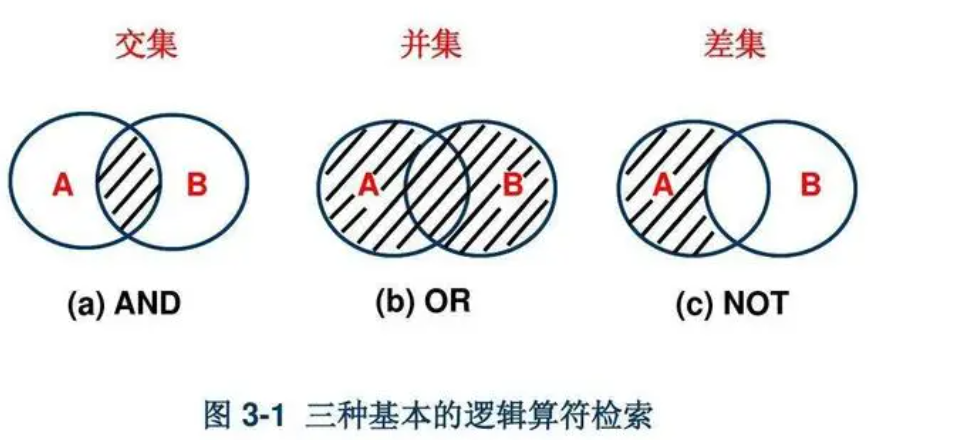
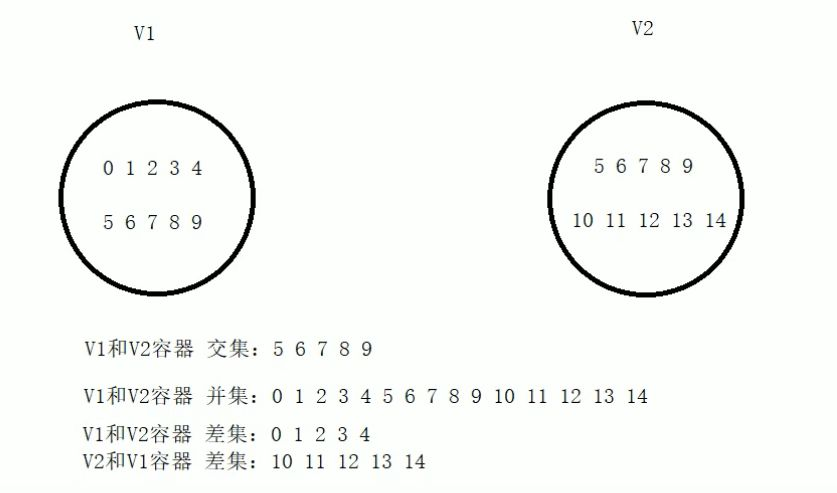
④ 求差集的两个集合必须是有序序列。
⑤ 目标容器的开辟空间需要从两个容器取较大值。
⑥ set_difference返回值是差集中最后一个元素的位置。
#include<iostream>
using namespace std;
#include<vector>
#include<numeric>
#include<algorithm>
void myPrint(int val)
{
cout << val << " ";
}
void test01()
{
vector<int>v1;
vector<int>v2;
for (int i = 0; i < 10; i++)
{
v1.push_back(i); //0~9
v2.push_back(i + 5); //5~14
}
vector<int>vTarget;
//目标容器需要提前开辟空间
//最特殊情况 两个容器没有交集,取两个容器中大的size作为目标容器开辟空间
vTarget.resize(max(v1.size(),v2.size()));
cout << "v1和v2的差集为:" << endl;
vector<int>::iterator itEnd = set_difference(v1.begin(), v1.end(), v2.begin(), v2.end(), vTarget.begin());
for_each(vTarget.begin(), vTarget.end(), myPrint);
cout << endl;
for_each(vTarget.begin(), itEnd, myPrint);
cout << endl;
cout << "v2和v1的差集为:" << endl;
itEnd = set_difference(v2.begin(), v2.end(), v1.begin(), v1.end(), vTarget.begin());
for_each(vTarget.begin(), vTarget.end(), myPrint);
cout << endl;
for_each(vTarget.begin(), itEnd, myPrint);
cout << endl;
}
int main()
{
test01();
system("pause");
return 0;
}
运行结果:
v1和v2的差集为:
0 1 2 3 4 0 0 0 0 0
0 1 2 3 4
v2和v1的差集为:
10 11 12 13 14 0 0 0 0 0
10 11 12 13 14
请按任意键继续. . .
